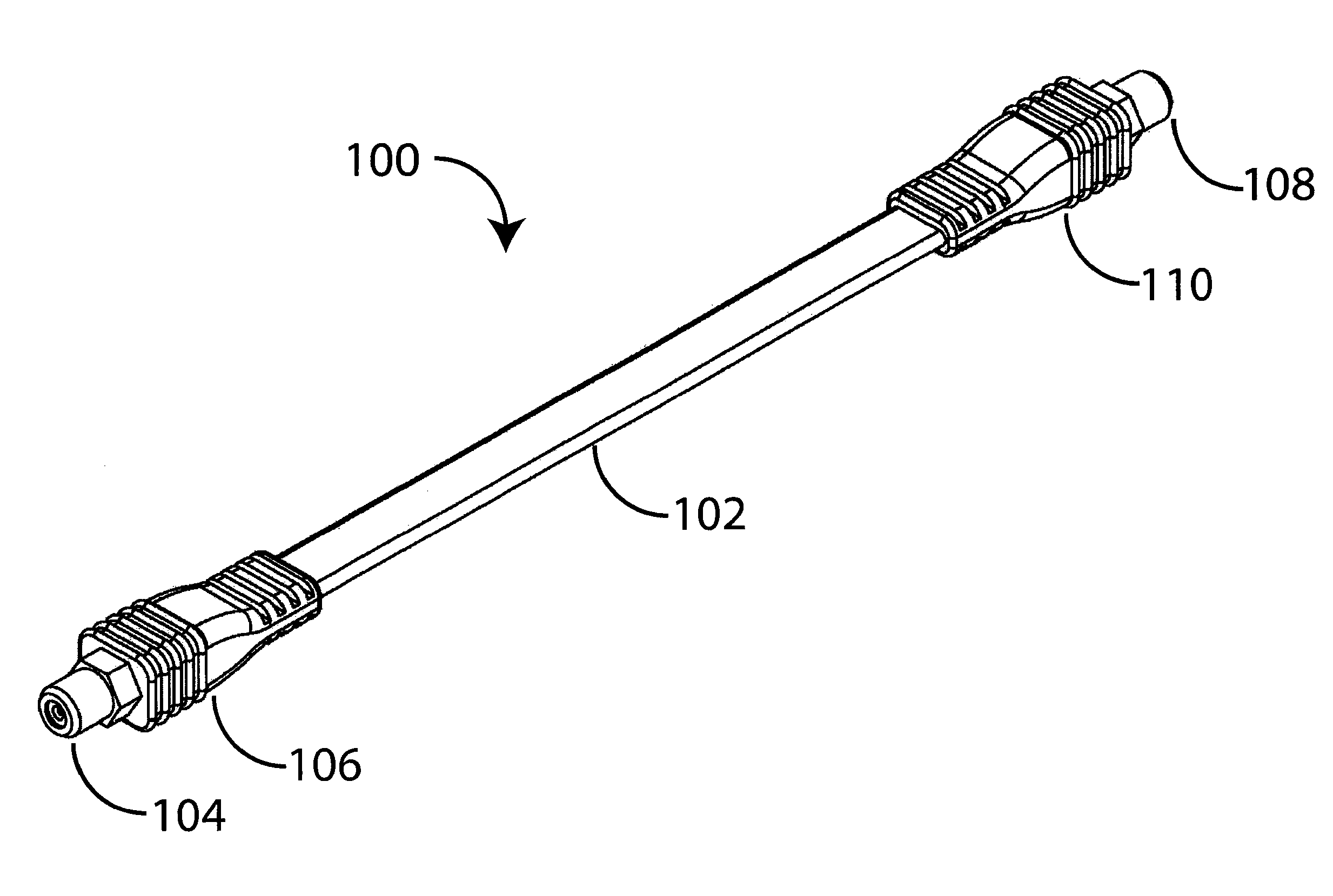Protected coaxial cable
a coaxial cable and shielding technology, applied in the direction of power cables, cables, coupling device connections, etc., can solve the problems of wireless solutions that cannot solve the problem of permanent alteration of buildings, unauthorized building modifications, and ownership of cable modifications,
- Summary
- Abstract
- Description
- Claims
- Application Information
AI Technical Summary
Benefits of technology
Problems solved by technology
Method used
Image
Examples
Embodiment Construction
[0041]The disclosure provided in the following pages describes examples of some embodiments of the invention. The designs, figures, and description are non-limiting examples of embodiments they disclose. For example, other embodiments of the disclosed device and / or method may or may not include the features described herein. Moreover, disclosed advantages and benefits may apply to only certain embodiments of the invention and should not be used to limit the disclosed invention.
[0042]To the extent parts, components and functions of the described invention exchange electric power or signals, the associated interconnections and couplings may be direct or indirect unless explicitly described as being limited to one or the other. Notably, parts that are connected or coupled may be indirectly connected and may have other devices interposed therebetween including devices known to persons of ordinary skill in the art.
[0043]FIG. 1 shows a guarded coaxial cable assembly in accordance with the...
PUM
| Property | Measurement | Unit |
|---|---|---|
| thickness | aaaaa | aaaaa |
| width | aaaaa | aaaaa |
| thickness | aaaaa | aaaaa |
Abstract
Description
Claims
Application Information
 Login to View More
Login to View More - R&D
- Intellectual Property
- Life Sciences
- Materials
- Tech Scout
- Unparalleled Data Quality
- Higher Quality Content
- 60% Fewer Hallucinations
Browse by: Latest US Patents, China's latest patents, Technical Efficacy Thesaurus, Application Domain, Technology Topic, Popular Technical Reports.
© 2025 PatSnap. All rights reserved.Legal|Privacy policy|Modern Slavery Act Transparency Statement|Sitemap|About US| Contact US: help@patsnap.com



